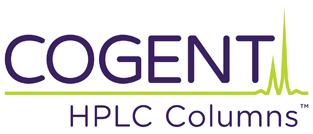Due to differences in UV absorbance between two solvents at a particular monitored wavelength, you will generally observe a sloped baseline when performing gradient methods with HPLC-UV. As the solvent composition changes, the UV “background” changes and results in a sloped baseline. This affect is generally less pronounced at higher wavelengths due to the less significant absorption of either solvent at higher wavelengths. In some cases it can be difficult to perform accurate quantitation of your analyte peaks if the slope is very steep. If the solvents have impurities in them, you may even see ghost peaks that are not part of the sample at all.
The sloped baseline can be corrected using most HPLC software programs by “Blank Subtraction”. In this case you would run a “Blank” as well as your sample runs. In the data analysis section of the software, you subtract the blank signal from the sample signal. Since the slopes of these two are the same, the resulting subtracted signal will produce a “flat baseline”. Ghost peaks will show up in the blank as well as the sample and will also be subtracted. For the blank, 50/50 solvent A/solvent B works well.
The UV characteristics of the mobile phase solvents should always be considered. One of the reasons acetonitrile is a good solvent for HPLC is because it has a low UV cutoff of 190nm. Acetone for example can often be a good substitute in terms of chromatography but its UV cutoff is much higher (330 nm). For this reason it is used much less often in HPLC-UV methods. Any mobile phase additives such as Formic Acid will also contribute to the UV background as well.


